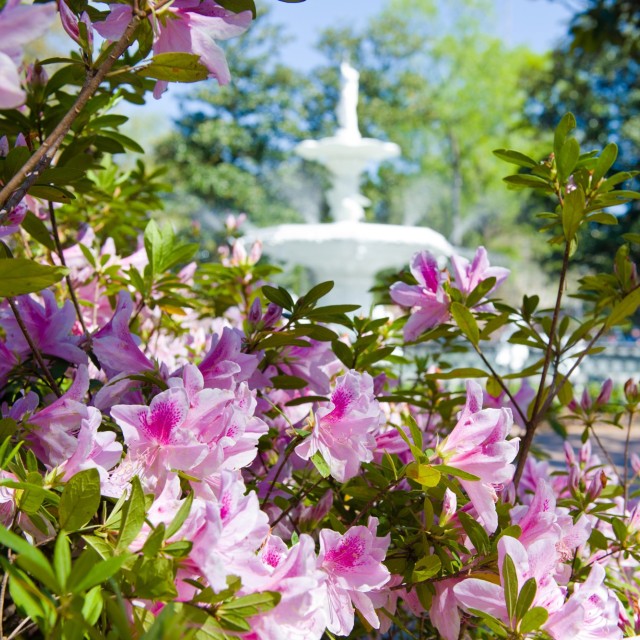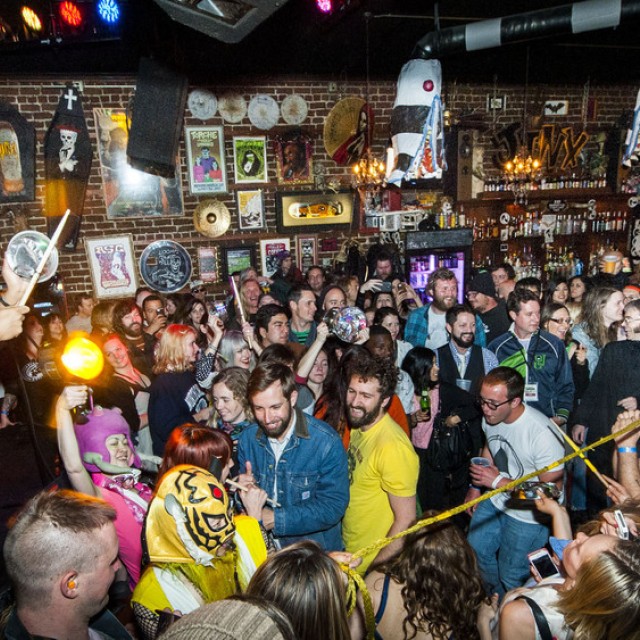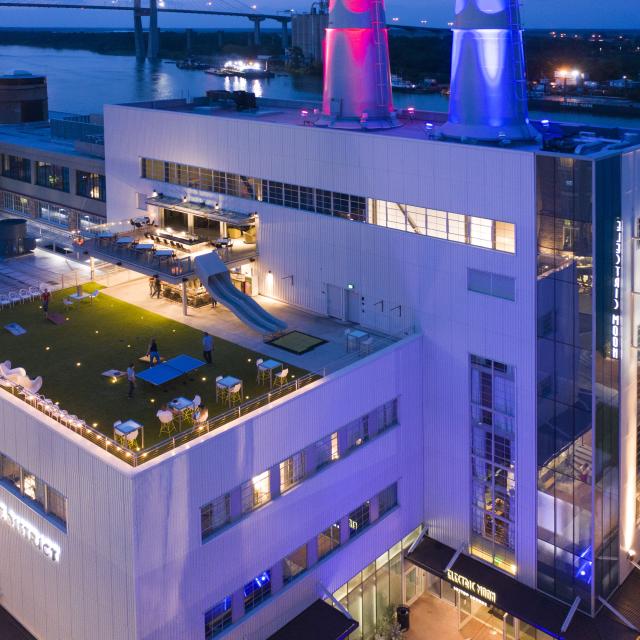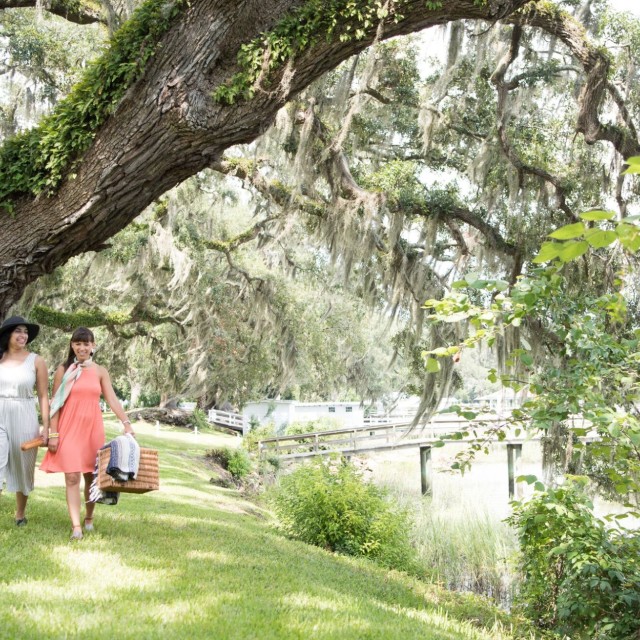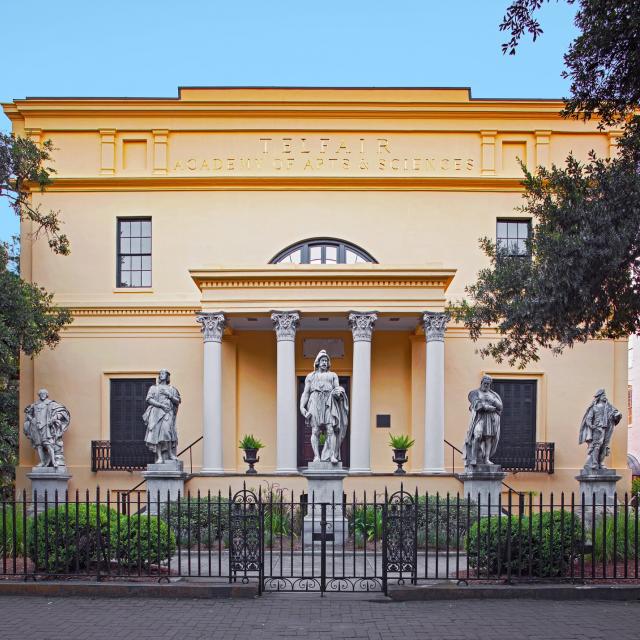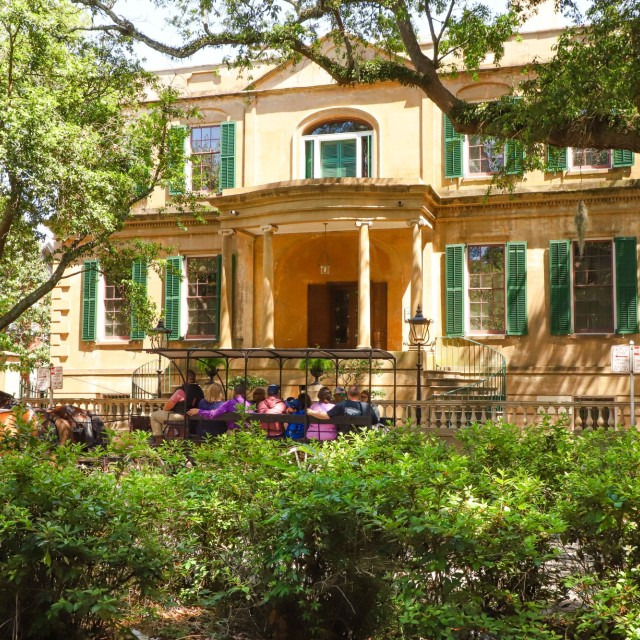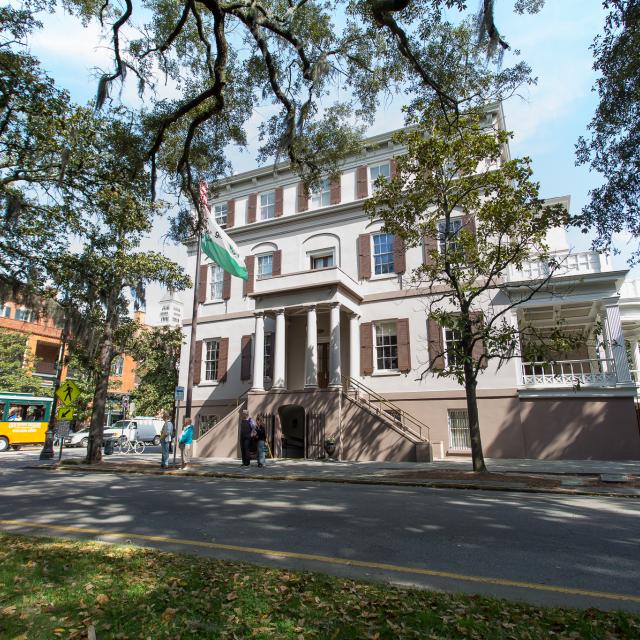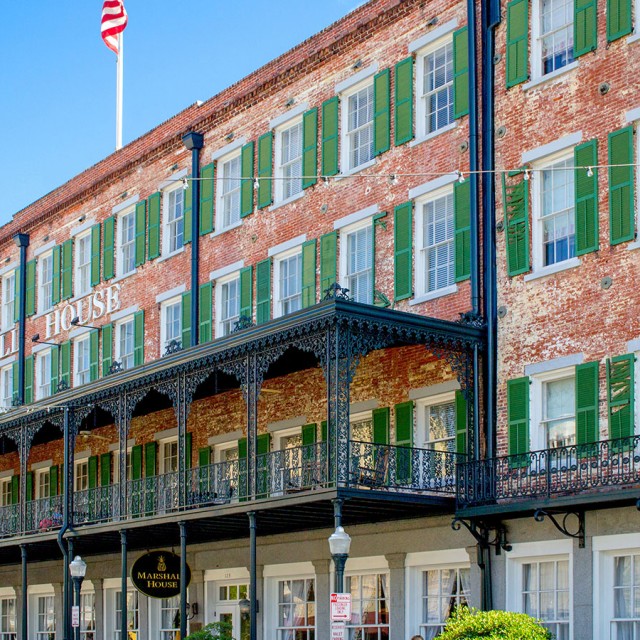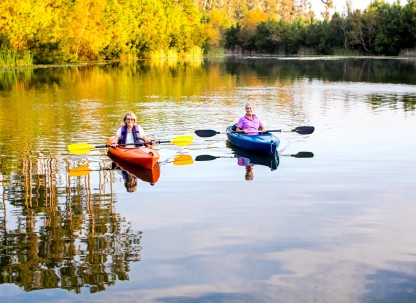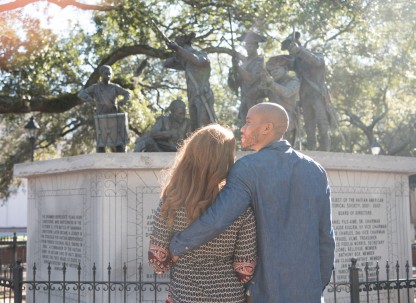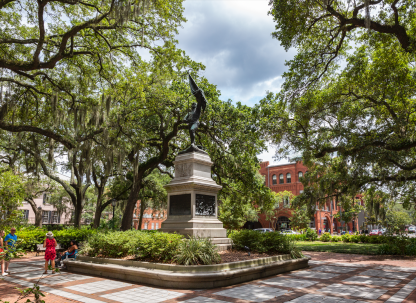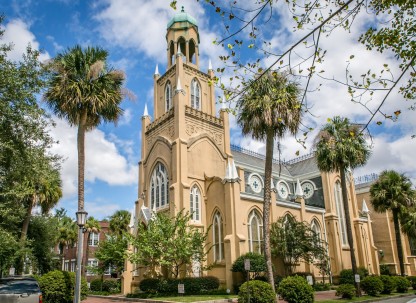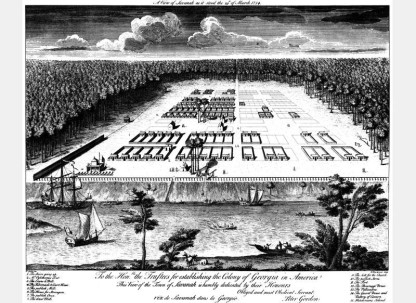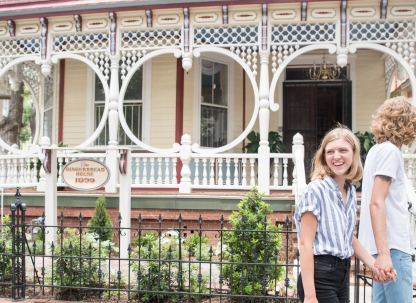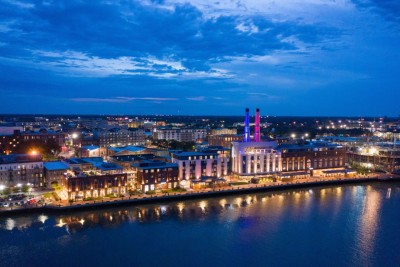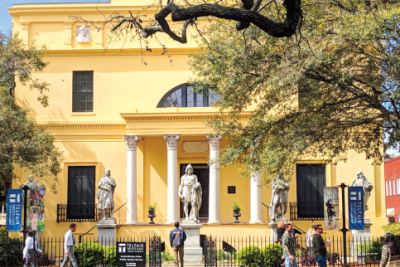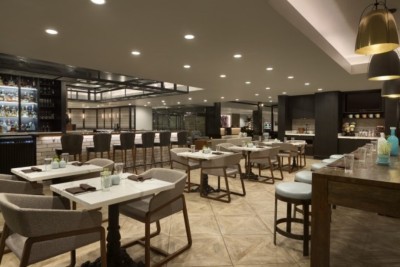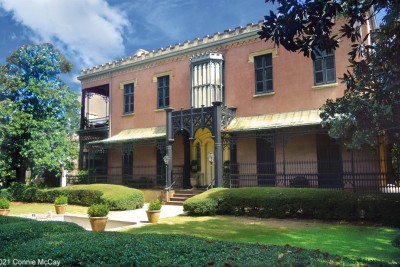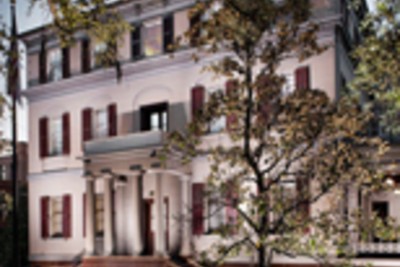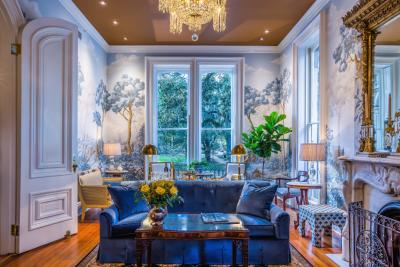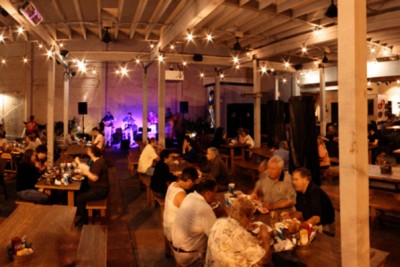Savannah's Historic + Architectural Itinerary
By Brittany Howard

Savannah's admiration and value are evident through the city's respect for its past and architectural details, delicately preserved, displayed on every corner of historic downtown.
Savannah's Historic + Architectural Itinerary will provide insight into a few most known attractions, history and architectural styles.
The Grey - Greyhound Bus Terminal
James Beard award-winning The Grey was originally a Greyhound Bus Terminal founded in 1938 - once racially segregated by restrooms and waiting areas. Owner John O. Morisano purchased the building in 2013 with plans to begin a restaurant and later teamed up with Chef Mashama Bailey to form the perfect duo.
Plant Riverside District - Power Plant
The current Plant Riverside District began as the city's Power Plant in 1912. The plant went through a significant expansion from 1941-1958 to cease operation in 2005 eventually. The Kessler Collection, founded by William Kessler, bought the site in 2012. The captivating entertainment district you know today opened in 2020 with an additional quarter mile of new river walk.
City Market - Open-air Market
Founded in 1733, City Market began as a warehouse marketplace for locals to purchase groceries. Located in Ellis Square, this landmark was known as the location of slave auctions before General Sherman's invasion. Today City Market is one of the city's most loved and recognized landmarks for art lovers, dining, shopping and history.
Telfair Academy - Neoclassical Regency
Constructed in 1819 for the Telfair family, Telfair Academy evolved into a free art museum in 1886. Founded by Mary Telfair, the museum is one of the oldest in the South and the first art museum founded by a woman in America. Today's museum houses over 200 years of artistic history (including the iconic Bird Girl Statue).
Kennedy Pharmacy - Pharmacy
Before its massive restoration, Kennedy Pharmacy was built in 1890 by Robert Kennedy, a local harbor master. He intended it to be an income property, and it eventually became the business and home of the Anti-Migraine Company for a pharmacist and his family. The building remained a drugstore until the 1940s. After a two-year restoration partnership between the Historic Savannah Foundation and SCAD, the building's grand opening in 2022 observed it as the new Davenport House Museum gift shop.
Georgia State Railroad - Railroad Station
The Georgia State Railroad was constructed in 1853 by the Central of Georgia Railway before the American Civil War. The site was later transferred to the City of Savannah and the Coastal Heritage Society opened the museum in 1989.
Olde Pink House - Colonial
Also known as Habersham House, The Olde Pink House was built in 1771 by James Habersham Jr. for his family. The home became Planters Bank, the first bank in Georgia, in 1812. The home was once a military general's headquarters for Union troops in 1864 and several other businesses, including Alida Harper Fowlkes' Georgian Tea Room, before becoming a restaurant in 1971.
First African Baptist Church
Formed in 1773, the First African Baptist Church is one of the oldest African-American congregations in America, built by the freed and enslaved. Visit to observe the church's original baptismal pool, light fixtures, and impressively preserved stained glass windows with prints of the founding ministers, George Liele and Andrew Bryan.
Second African Baptist Church
The Second African Baptist Church was built in 1802. The church's congregation in 1865 was a witness to General Sherman's Special Field Order #15, publicly addressed by General Rufus Saxton to proclaim the “forty acres and a mule.” Dr. Martin Luther King's "I Have a Dream" speech was also given here in 1963 before The March on Washington.
First Bryan Baptist Church
Andrew Bryan purchased the First Bryan Baptist Church in 1793, a formerly enslaved person who'd bought his freedom with the aid of five other enslaved people. It is also home to the first organized Sunday School for African Americans in 1826, houses the history of African Americans in Georgia, as well as the 1856 Knauff Pipe organ, one of the last of its kind in the U.S.
Congregation Mickve Israel
Congregation Mickve Israel is America's third oldest Jewish congregation and is the first synagogue built in Georgia in 1733. The two oldest Torah scrolls in North America are on view here, as well as the letters personally written to the church by past presidents George Washington, Thomas Jefferson and more.
Cathedral Basilica of St. John the Baptist
The Cathedral Basilica of St. John the Baptist is one of Savannah's most recognizable churches. You've probably seen many photos and videos of this beautiful structure's tall steeples, stained glass and white stucco exterior. Since 1873 the cathedral has been a place of sanctuary and architectural beauty for so many.
Lutheran Church of the Ascension
Since 1741, the Lutheran Church of the Ascension has been a humble servant to Savannah, spreading the good news of faith. It was the first Lutheran church in town and was a temporary hospital during the American Civil War.
Pin Point Heritage Museum - Crab Factory
Located in the old A.S. Varn & Son Oyster and Crab Factory, Pin Point Heritage Museum is more than an exhibition room; it's an educational hub, led by descendants and locals of the community, to teach the history of the Gullah Geechee community founded in 1896 by freedmen after the Civil War.
Owens - Thomas House & Slave Quarters - Regency
The Owens - Thomas House & Slave Quarters was built in 1819 for enslaver and shipping merchant Richard Richardson. The home tells the story of the contrast between the privileged and enslaved. Margaret Gray, the last family descendent, bequeathed the property to the Telfair Academy of Arts and Sciences before she died in 1951 in honor of her grandfather, George Owens, and her father, Dr. James Gray Thomas. The museum was opened to the public in 1954.
Juliette Gordon Low - Regency
Visit the once home and now historical landmark honoring the life and progressive movement of Juliette "Daisy" Gordon Low, organizer of the first Girl Scout troop, on March 12, 1912, in Savannah. The museum is still Girl Scout Headquarters, where thousands of young ladies flock to witness where the courageous journey began.
Harper Fowlkes House - Greek Revival
Harper Fowlkes House was built in 1842 by Charles B. Cluskey before being purchased in 1939 by Alida Harper Fowlkes, a preservationist and impressive businesswoman. She restored several buildings in Savannah and ran multiple businesses. Before her death in 1985, she willed the house to the Society of the Cincinnati in the State of Georgia under the stipulation that her furnishings would remain in the home. Harper Fowlkes House opened in 2008 as a museum after a few repairs to honor Alida.
Marshall House - Hotel
Marshall House was built in 1851 by Mary Marshall to provide accommodations and housing to Savannah.
Mysterious past:
- Union Troops occupied the hotel from 1864-65, led by General William Tecumseh Sherman.
- It was also used as a hospital for Civil War soldiers.
The home has a history of having the "friendliest ghosts." Guests have reported faucets turning on themselves and the laughter of otherworldly children playing and running down the halls late at night.
Mercer Williams House - Italianate Villa
Most recognized thanks to the best-selling novel, "Midnight in the Garden of Good and Evil," Mercer Williams House was initially constructed in 1868 for General Hugh Mercer, the great-grandfather of lyricist Johnny Mercer before socialite Jim Williams purchased the home in 1969. Willliams was known for the murder of his lover Danny Hansford in 1981.
Mysterious past:
- In 1913, the home's prior owner fell over a banister on the second floor, leaving him with a broken hip and a concussion. He passed three days later.
- After chasing pigeons, a young boy fell from the roof, leaving him impaled through the head after falling on the wrought iron fence in 1969.
- Jim Williams died from a heart attack near the same spot as Danny in 1990.
Williams was known for his elaborate Christmas parties and visitors have been known to hear music and witness people through the home's windows, especially during the holidays. Ghostly reflections have also been seen of a young boy repeatedly falling from the roof.
Kehoe House - Renaissance Revival
William Kehoe, a prominent businessman, built Kehoe House in 1892 for his wife and ten children.
Mysterious past:
- The residence was once home to Goette Funeral Home.
- Rumor has it that two of the 10 Kehoe children died in the house after getting trapped in the chimney (this has been debunked).
Most of the home's stories reflect hearing the sounds of the children allegedly trapped in the chimney. It has also been rumored that one of the young girls got too close to the top of the steps and fell to her death. Guests also sense a presence walking past their beds and touching them as they sleep.
Hamilton-Turner Inn - Victorian
Hamilton-Turner Inn was built for Samuel Pugh Hamilton's family in 1873. It was the first house in Savannah to be wired for electricity, partly due to Hamilton's work with Brush Electric Light & Power Company, just one of his many jobs. It was also one of the only homes to survive after the Savannah Fire of 1898.
Mysterious past:
- The Hamilton family was known for its many fancy parties.
- The children would roll billiard balls down the stairs to sneak a peek at the entertainment.
- Hamilton kept a guard on his roof to watch the property, who was later found murdered.
Guests have reported the sounds of children playing and billiard balls rolling downs the stairs. There have been sightings of a cigar-smoking man on the roof.
Pirates' House - Rustic Tavern
The Pirates' House was a gathering place for seamen and questionable characters in 1794. The bar/inn was known for its many brawls, slayings and, of course, pirates.
Mysterious past:
- There was once a Rum Cellar in the basement of the Pirates' House to River Street where drunken sailors were led, only to be forced into the pirate life.
Spooky shadows have been seen walking through the dining rooms of the current Pirates' House restaurant. Staff have reported having the sense that they're being watched. On several occasions, staff have turned to see sailors staring into their eyes before slowly disappearing and the sounds of boots walking across the plank floors.
Moon River Brewing Company - Brewery
First known as the City Hotel and Savannah's first hotel, built in 1821. It became Moon River Brewing Company in 1999.
Mysterious past:
- The building served as a hospital during Savannah's yellow fever outbreak. Hundreds of people reportedly died on the upper floors.
- The well-known shooting of James Stark took place on the second floor.
- There is a rumor that enslaved people were kept in the basement.
Ghosts have supposedly pushed people down the stairs, there are sightings of a mysterious "Lady in White" and spirits hang around in the women's bathrooms to spook visitors.
There is much to see and learn about in Savannah. Our neighborhoods & communities are vast - filled with centuries of purposeful designs worth uncovering.
